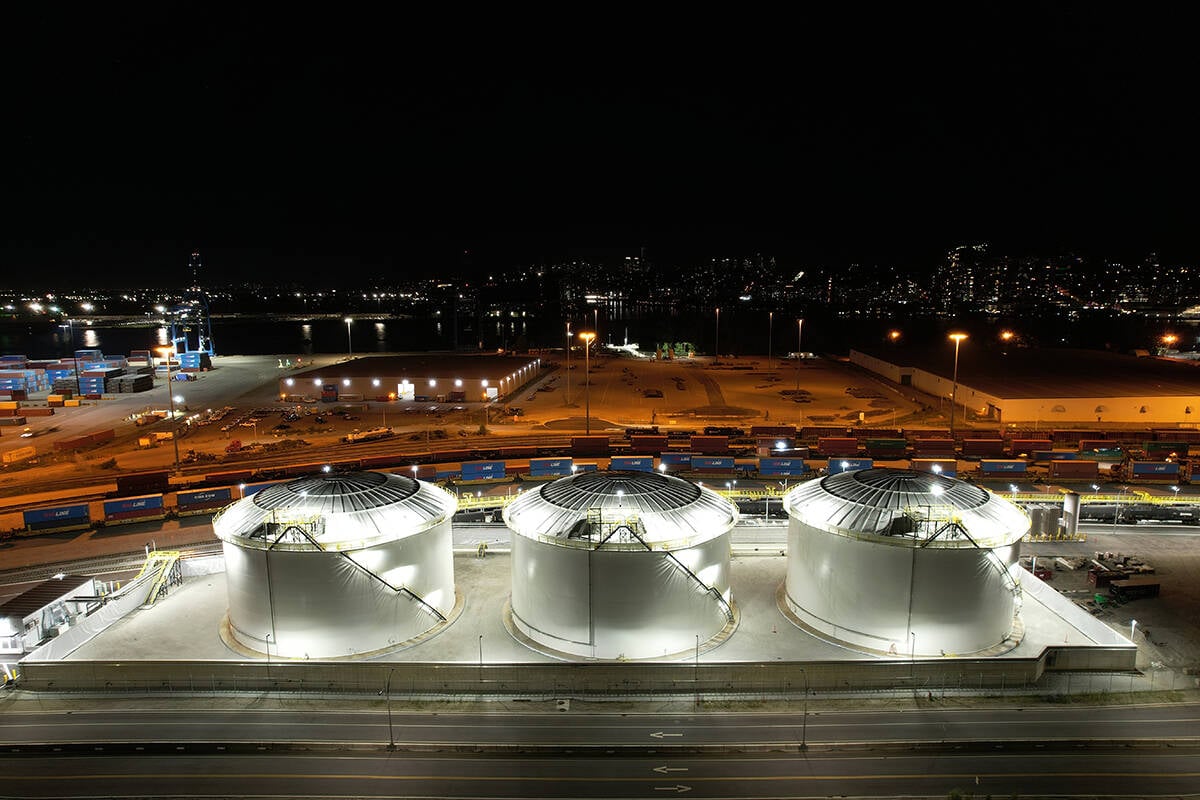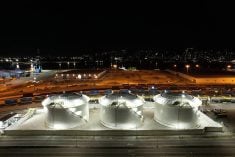BURNABY, B.C. – Imagine a silent auction where buyers sit silently at desks, no auctioneer banters, and the produce is mechanically wheeled in front of the buyers for a few seconds and then quickly whisked away.
Also imagine the bidding going down, instead of up, all bids punched into a keypad on individual desks, and the buyers watching a red hand on an electronic “clock” that drops the price $1 per sweep.
It may be hard to picture cattle being sold this way, but welcome to the world of flower auctions.
Read Also

Canola oil transloading facility opens
DP World just opened its new canola oil transload facility at the Port of Vancouver. It can ship one million tonnes of the commodity per year.
The United Flower Growers Co-operative in Burnaby has one of the most advanced computerized auctions in the world. It’s also the first totally silent auction.
With so many nationalities in British Columbia, it seemed the most logical way to sell flowers. It was the easiest system for everyone to understand. All communicating is done through the keypad. The only sound is small beeps to identify winning bids.
The co-operative’s controller, Kevin Snider, said there are four auctions in North America: Toronto, Los Angeles, San Diego and the one he oversees in Burnaby. “We’re the biggest of the auctions in North America,” he said.
A third of B.C.’s flower production is handled by the auction.
Some sold to the U.S.
Each year $35 to $38 million in sales are handled in this 10-year-old building. The majority, about 80 percent, of the customer base is in Canada. Flowers from the auction are also sold to states in the western U.S.
About 150 buyers have permanent seats at the auction, particularly if they come twice a week. The co-op handles about 600 accounts. About 900 wagons of flowers a day – or 85,000 wagons of flowers per year – are wheeled in front of the buyers as they sit in their desks.
The biggest selling time is around Mother’s Day. Springtime is busy as people buy their bedding plants. The co-op sells to garden centres, stores, florists and about 50 percent of its customers are wholesalers, who buy and ship to such areas as Seattle and Portland.
The new system with electronic clocks was installed in 1986 at a cost of about $4 million.
The computer automates all the work, records the amount the customer paid, keeps track of the customer, credits the grower and calculates the commission.
That’s a far cry from the early computerized auctions of 30 years ago when growers would sell their flowers to the wholesalers and wait as the information from the auction floor would be filled on sheets, attached to a clothesline, and wheeled to the office.
Modeled after Dutch system
The new system has been modeled after the Dutch auction system. All the product comes through one gallery that holds two clocks mounted on the wall. Buyers flip back and forth bidding on the clocks.
A red hand sweeps around the clock, dropping the price of the flowers offered. When a buyer decides on a price, he presses a stop button on a keypad in front of him to stop the clock when it reaches that price.
Wholesalers are driven by their customers in what they’re willing to bid. However, the auction also sets a minimum price, such as eight cents per cut flower. If the price falls to the minimum, it’s withdrawn from sale.
Growers can also control prices somewhat. If they aren’t satisfied with a price, they can hold the flowers and bring them back for auction the next day.
















